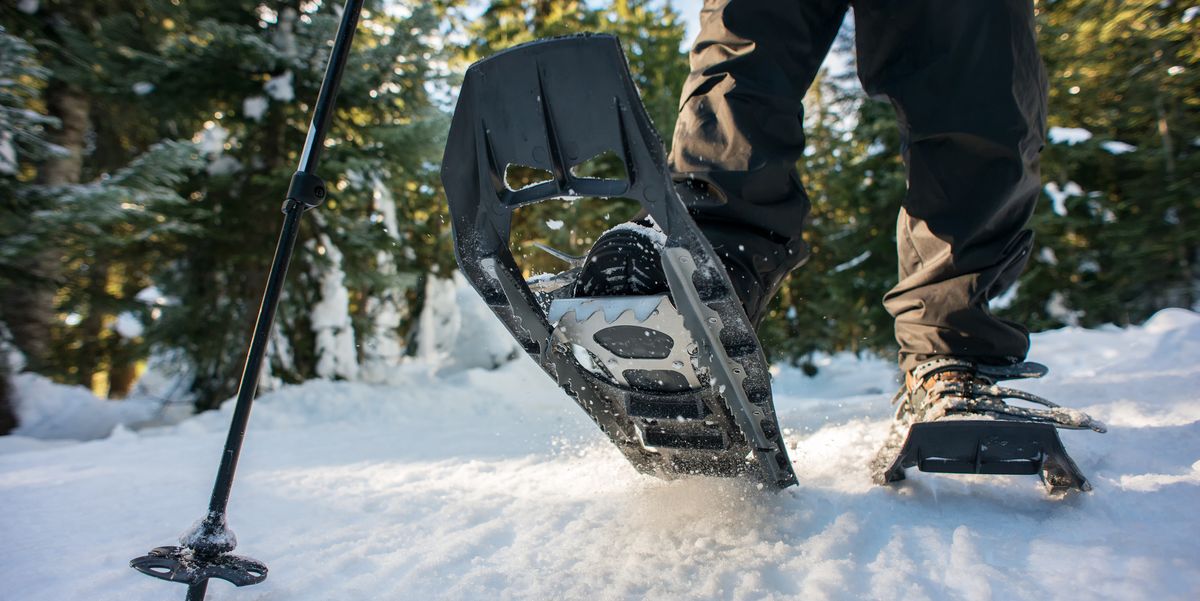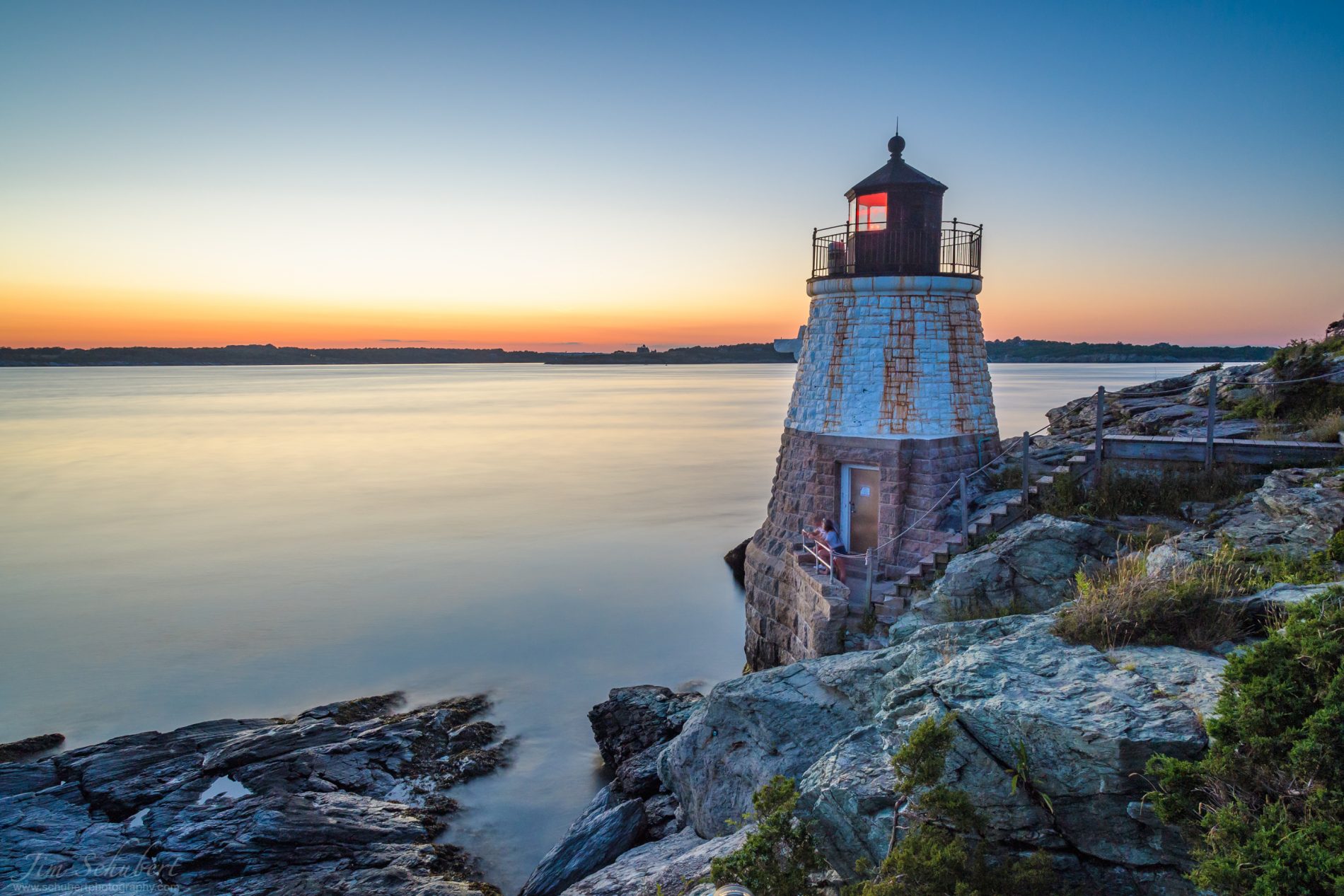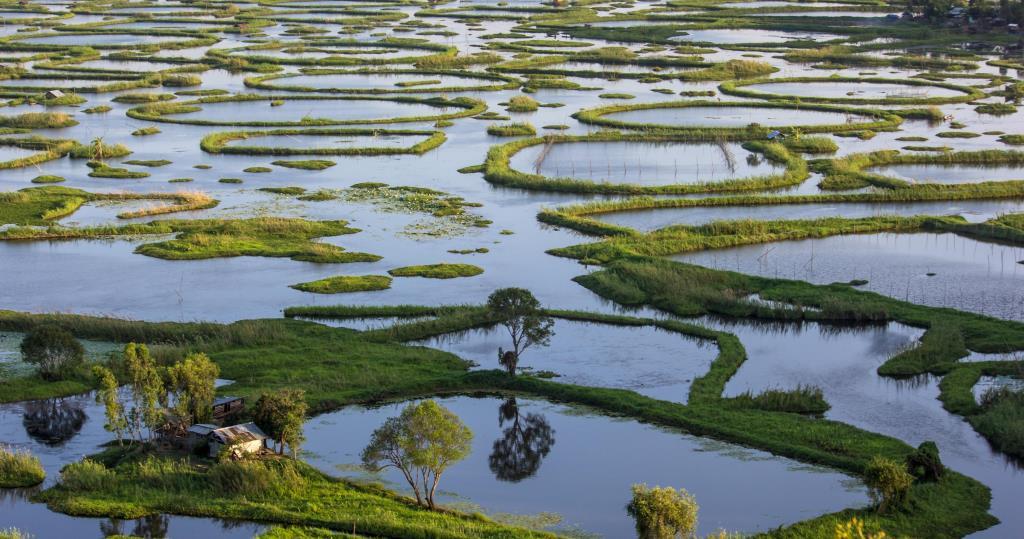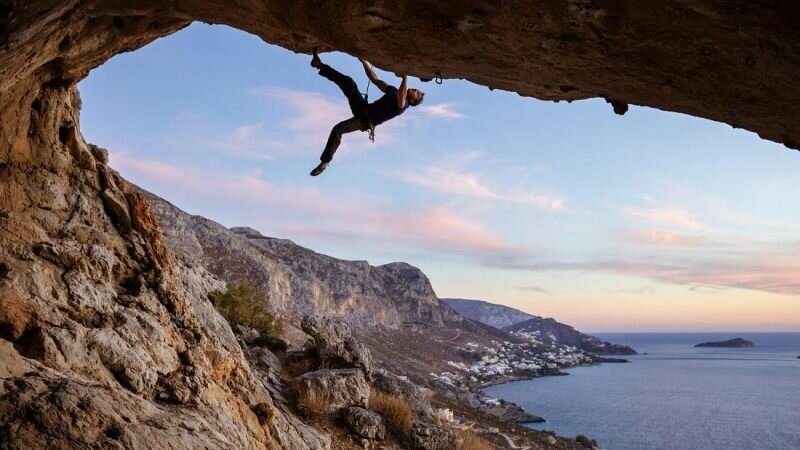Going to see more of your city, state, or national parks this winter? Arm yourself with a pair of snowshoes, and you’ll be able to tackle your favorite summer terrain even on snowy winter days. Snowshoes may seem like a mindless anachronism to the uneducated, but hiking through snow can be dangerous (and frustrating) without them.
Whether you’re on a winter trip to the mountains and want to explore, or you live in a snowy area and just want to get around easily, there’s a ton of snowshoes to help keep you afloat in all kinds of snow and terrain. Pair is. Below are some of our top picks for the best snowshoes in several categories, so you can buy a pair that best serves your budget for winter hiking, backcountry skiing, or even winter running. Read on to learn more about the best snowshoes available.
Atlas Range-MTN Snowshoes
It’s hard to find fault with the Atlas Range snowshoe (save for the price), and the name gives away what makes this snowshoe great: It excels in a wide variety of terrain. It’s a top-notch snowshoe built solely for mountain adventures, which means down icy slopes, crusty and sun-baked skin tracks above, and through fluffy powder in the woods where it feels like you’re in the snow.
BOA technology—which you may recognize from your snowboard boots—makes clipping a breeze, and traction rails run the length of the shoes through icy uphills. They’re very light at less than 2 pounds per shoe, and the 19-degree heel lifts should help you climb steep hills with fewer breaks by reducing foot and leg fatigue.
Sizes: 26, 30, 35 | Weight per pair: 3 pounds, 13 ounces | Dimensions: 26 x 7.5 inches | Max recommended load: 300 pounds (35-inch version)
FLASHTEK Light Weight Snowshoe Kit
This kit is an ideal buy for athletes who like to head out a few times a month (or a few times per season), but plan to spend most of their time in state parks and trail systems rather than attempting aggressive climbing make. The budget-friendly snowshoe kit includes a pole, aluminum snowshoe, and a storage bag to keep your gear together while you stash it in the garage for summer.
It doesn’t have the heel support, traction system, or metal clip you’d want for extreme conditions or icy downhill pitches, but they are an excellent option for the casual snowshoe and winter walker.
Sizes: 21, 25, 30 | Weight per pair: up to 4 pounds (30-inch option) | Dimensions: N/A | Max recommended load: 260 pounds (30-inch version)
Crescent Moon Eva Foam Snowshoes
Snowshoes are great for swimming and can be a game-changer if you’ve only snow-hiked in boots. Still, newcomers may struggle with the added bulk and awkward feel of having a wide platform attached to their feet. The Crescent Moon EVA Foam Snowshoe is a wide platform, but by using the same compound as the soles of your running shoes, they’ve created a flexible platform that’s an easy transition for those new to the sport.
While they are best suited for more well-traveled, packed-down trails, EVA foam shoes have seriously lost out on the soles for traction in the snow. Additionally, they are completely recyclable through sneaker recycling programs. Bonus: The Boulder-based company scrutinizes its manufacturing processes to ensure environmental friendliness.
Sizes: One size | Weight per pair: 3 pounds, 8 ounces | Dimensions: 24 x 8 inches | Max recommended load: 200 pounds
MSR Women’s Lightning Explore Snowshoes
A women’s-specific snowshoe doesn’t just mean better color choices. Most of MSR’s women-specific options have the ideal mix between being lightweight and durable for all-day outings. Our favorite model is the Women’s Lightning Explore. Like all of the Lightning series shoes, it has a HyperLink binding system, which allows users to step in and out of the binding with just one strap.
They’re significantly lighter than other similarly capable shoes (and they’re very capable, thanks to sharp traction spikes running the length of the frame) and at 7.5 inches on the narrow side. It’s ideal for women with shorter legs or those who take short steps because it essentially eliminates the risk of the inner edges clipping against each other when navigating narrow climbing tracks.
Sizes: 22, 25 | Weight per pair: 3 pounds, 8 ounces (22-inch version) | Dimensions: 22 x 7.5 inches or 25 x 7.5 inches | Max recommended load: 210 pounds (25-inch version)
Yukon Charlie SNO-Bash Youth Snowshoes Kit
Help your budding athlete learn to snow with Yukon Charlie’s SNO-Bash Kids Snowshoe. The one-pull binding system makes it easy for kids to keep them all on their own, and the flexible foot panel will help them stay outside longer without causing foot fatigue. Of course, rolling those same legs also means they’re not best for serious climbing. But since they cap at about a 100-pound weight limit, they’re really best for young kids who aren’t quite ready to tackle any real winter summit effort.
Sizes: 19 (one size) | Weight per pair: 2.2 pounds | Dimensions: 16 x 7 inches | Max recommended load: 100 pounds
TSL Highlander Elite
Many snowboarders view snowshoes as a simple, intuitive way to get off-piste for untouched lines in the backcountry. Splitboarding gear can be heavy and cumbersome, but on a snowshoe, you can walk normally and carry your regular snowboard (or skis) on your back. But since you’re probably going to be climbing fairly steep slopes in search of the perfect downhill line, your snowshoes need to be both action-oriented and uphill.
The TSL Highlander Elite has been designed with this goal in mind and features a lightweight molded plastic frame with stainless steel crampons, a BOA binding system, a hood to encourage a natural stride and reduce foot fatigue. There’s a rocker shape and an hourglass shape so you don’t. Knock off your inner edges and move down the skin track. It also has lateral teeth to provide grip when crossing slopes perpendicular to the line of fall or moving up icy slopes.
Sizes: S, M, L | Weight per pair: 2.2 pounds | Dimensions: 20.5 x 7.5 inches (S), 24.2 x 8 inches (M), 27 x 8.5 inches (L) | Max recommended load: 300 pounds
Tubbs Panoramic Snowshoe
If you’ve been reading online reviews of snowshoes before making a purchase (which is always a good idea!), you’ll probably notice that Tubbs Panoramic Snowshoes usually have high ratings when it comes to floating (or how much it is). Well stays on top) powder).
No snowshoe can stop anything from sinking in, but the Panoramic’s lightweight decking distributes the weight well and does an excellent job of keeping you on top of freshness. The Panoramic also comes in a massive 36-inch version, which will keep the snowshoers up to 300 pounds. If you plan to snowshoe on super-dry snow, like most of the Rocky Mountains get, consider buying a size up to further increase your weight distribution.
Sizes: 25, 30, 36 | Weight per pair: 4 pounds, 8 ounces | Dimensions: 25 x 9 inches, 30 x 9 inches, 36 x 9 inches | Max recommended load: 300 pounds (36-inch version)
TSL Symbioz Hyperflex
With a small footprint that makes narrow tracks a breeze and fast crampons that can serve as a weapon in a pinch, the Symbioz Hyperflex snowshoes excel when it comes to hard-packed trails and snow. If you need a pair of snowshoes for winter hiking along narrow singletrack or for climbing the northern faces of snowy slopes, these are your best bet.
The heel lift stays on exceptionally well and the BOA system makes quick work of on-mountain adjustments. Depending on the area around you, they can also work quite well for backward days when you’re rolling around in icy, crusty layers.
Sizes: S, M, L | Weight per pair: Between 2 and 2.4 pounds | Dimensions: 20.5 x 7.5 inches, 23.5 x 8 inches, 27 x 8.5 inches | Max recommended load: 300 pounds (size large)
Final Verdict
For the best all-around snowshoe, we like the Range-MTN (look into Moosejaw) from Atlas. This is going to handle most terrain for the most amount of snowshoers. However, if you’re not going to snowshoe more than a dozen times in a season, you may want to consider the more budget-friendly option of the FlashTech kit (look for it at Amazon).
What to Look for in Snowshoes
Size and Shape
A larger snowshoe is generally better suited for deep powder snow, while smaller boots are more effective in harsh snow conditions and steep climbs. You don’t necessarily want an ultra-wide snowshoe because you’ll increase the chances of you stepping on your feet and because increased flotation is usually achieved with taller snowshoes than with wider ones. MSR offers an add-on accessory tail that you can employ in deep snow conditions.
Crampons and Teeth
While the surface area is what keeps you afloat, integrated crimps, teeth, and rails are what provide traction. The more aggressive the traction elements, the better the snowshoes are suitable for moving up or down steep terrain. Look for dents along the tracks of the frame, cramping at the toe and/or heel, as well as the braking bar behind the heel area. The more these elements are used, the better the snowshoe will perform in mountainous areas.
However, if you’re traveling in mostly flat areas, you can opt for less expensive snowshoes that omit many of these traction features.
Materials
While classic snowshoes have leather webbing stretched across a wooden frame, most modern snowshoes are made from either an aluminum frame or a composite deck. Both the materials are lightweight and strong but have different designs with different pros and cons.
Aluminum frames mostly mimic the classic design where a material such as nylon is stretched across the frame to form the deck. Composite snowshoes often have a single-piece construction where a plastic composite makes up the bulk of the deck. Compound snowshoes are often shorter and therefore better suited for more mountaineering types of adventure, while aluminum frame snowshoes can be wider, longer and retain structural integrity, making them better for deeper, lighter snow.
Price
You really get what you pay for in snowshoes. Higher-priced snowshoes will generally have better performance and longer lasting than cheaper models. That said, if you’re only an occasional snowshoe or just want a pair for a winter trip where you’ll go for a moderate hike once or twice, the budget option can be a great option. The most expensive snowshoes are usually the more streamlined, traction-heavy mountaineering snowshoes that may not be the right fit for your adventure, so remember that “better” may not actually be the best option for you.
Similar Articles









